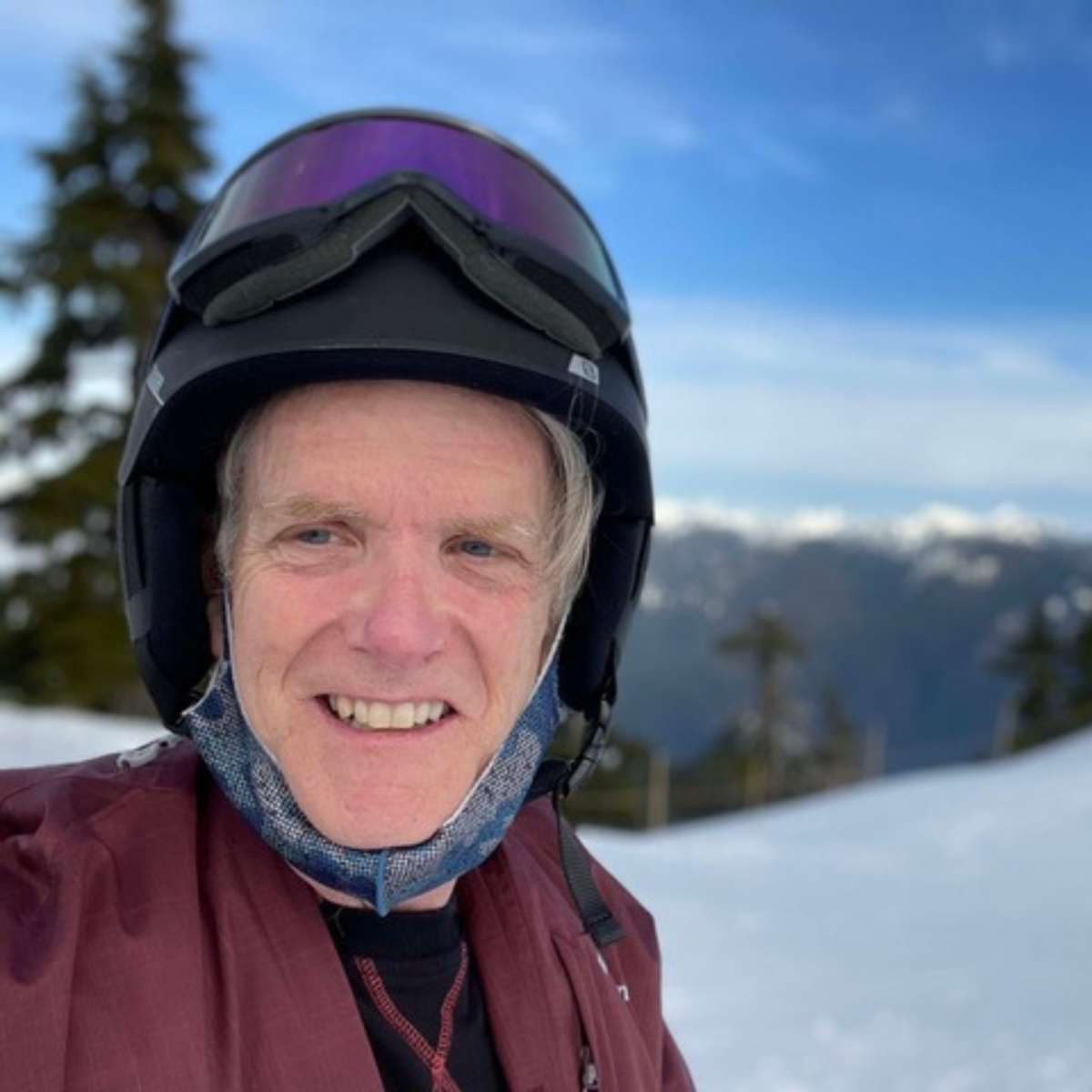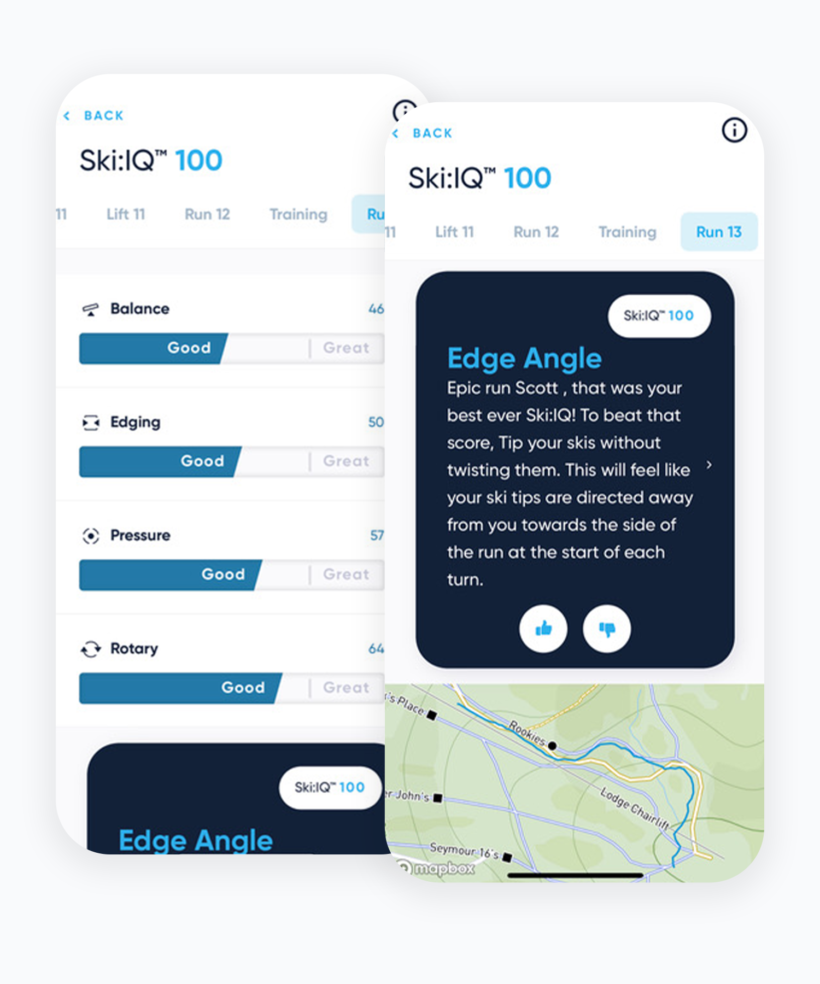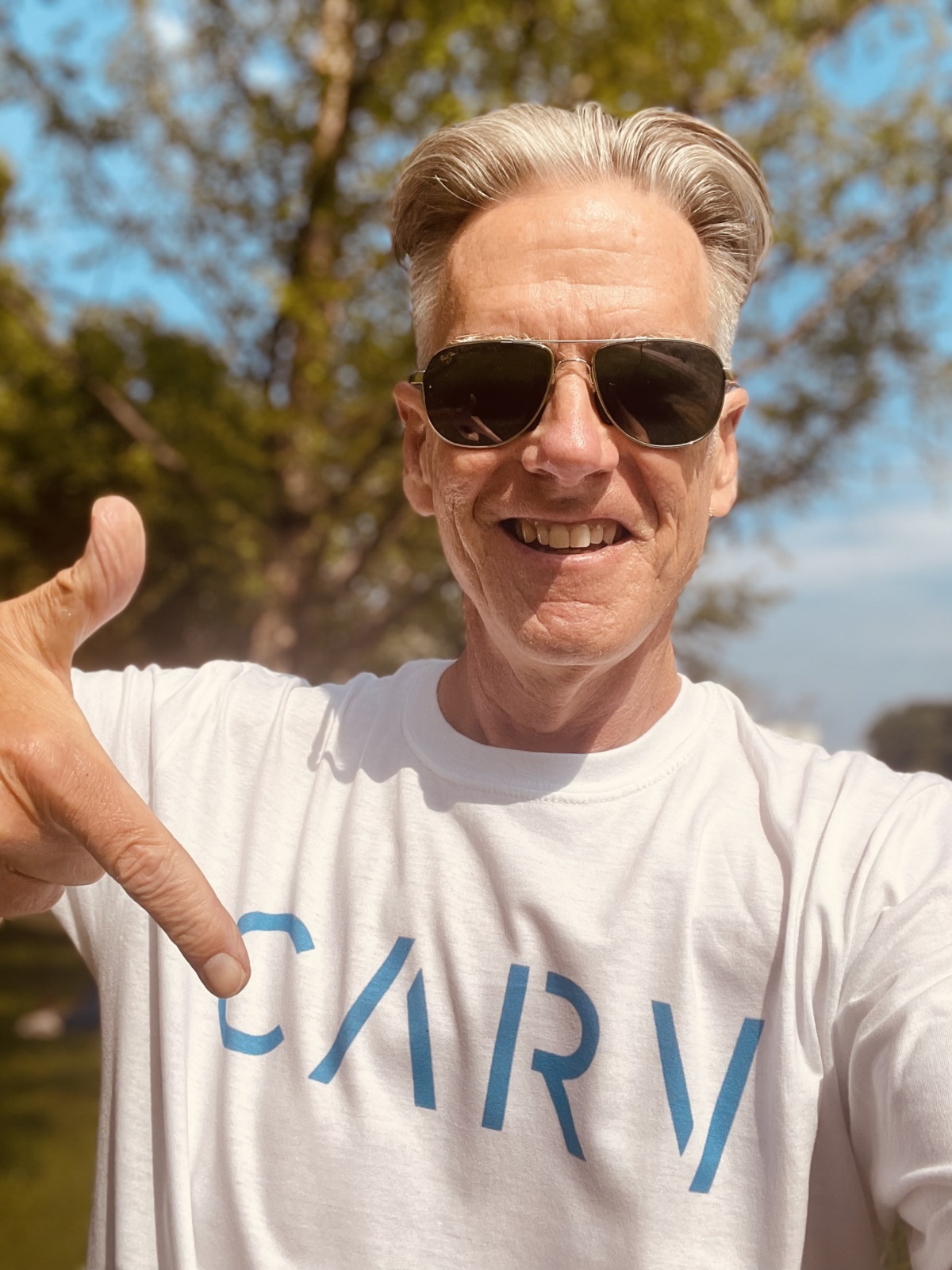How Carv helped me find my skiing confidence

Votes:
I’ve had a long, difficult and often dangerous relationship with skiing.
There’s a happy ending to this story, even though it took decades to happen – but first, let me take you back. Way back … to Jan. 12, 1969.

If Carv can help a guy like me – scared crapless for five decades to go downhill on a pair of skis – it can help anyone.
My five-decade-long, long journey down a ski hill
I remember the exact date of my very first time on skis for two reasons: it was the day of Super Bowl III; it was also the first of many days that I felt utter embarrassment and frustration on a ski hill.
I grew up in a small Canadian town with no hills nearby. Hockey was the preferred winter sport. But on this day in the winter of 1969, my friend Rob and his father – both avid skiers – took me to their ski club a few hours away. I couldn’t even master getting up the hill. I fell on the rope tow. I fell off the T-bar. I fell down the hill. Many times. Let’s just say Joe Namath had a much better day than I did on Jan. 12, 1969.
The next time out was worse. My family decided to take a Christmas vacation at a popular ski resort in Ontario. My parents weren’t skiers, but they were planning a trip to Switzerland later that winter so off we went to learn to ski. My second day, while in a lesson, I attempted a “jump turn” that resulted in a violent fall. The result: a trip down the hill in a ski patrol toboggan and a broken leg. It was a humiliating, painful experience for an 11-year-old kid.
In my mind, my skiing days were over. Running marathons and riding road bikes became my adult passions. There was no need to try to learn a sport that bruised both my body and my ego.
In my mind, my skiing days were over.
But deep in the back of my brain, there was always the curiosity, the need to conquer a fear and frustration from my childhood. So, five decades after that broken leg, I tried again.
This time, instead of being on the flatlands of southern Ontario, I was in British Columbia. Skiing is a way of life there. Vancouver boasts itself as a city where you can ski in the morning and golf in the afternoon. There are three ski areas within the greater Vancouver area, easily reachable in under an hour from downtown. I would stare at the mountains, the ski areas visible for all to see. They beckoned. They teased. They convinced me to try again.

It’s now the winter of 2020 – a few months before the pandemic – and I’m taking a group beginner’s lesson on Cypress Mountain. It’s me and half a dozen other newbies, all of whom were at least half my age. And in a flash, it all comes rushing back. The panic. The fear. The embarrassment. I’m physically unable to do the snow plow/pizza manoeuvre – my recalcitrant hips are just incapable of allowing my skis tips to come together to allow a gentle stop. Houston, we have a problem. Nevertheless, I venture onto a green run at the end of my lesson. Two runs and about half a dozen tumbles and I’ve had enough.
A week later and I’m waiting in line for a gondola lift at Whistler. I know what you’re thinking. What’s a 61-year-old guy who can’t perform a snowplow stop doing at a world-class ski resort? Or, posed as a rhetorical question: How could you be so stupid? Within minutes of my first run, I start an uncontrollable spin down the hill. It ends with me falling forward. When my boot refuses to release from my rental skis, I feel an excruciating pain in my calf. I’m a heap on the hill, unable to move. Throw in some busted ribs for good measure. And almost 50 years to the day, I’m taking another ride down the mountain in a ski patrol toboggan. The muscle spasms in my leg on the two-hour drive back to Vancouver were the worst pain I’d ever felt in my life.
And in a flash, it all comes rushing back. The panic. The fear. The embarrassment.
A sensible person might rightly consider that maybe skiing wasn’t made for me. Maybe try sky diving or cliff climbing. And yet...the Whistler injury somehow made me more determined. And even angry. Why couldn’t I do this? As my leg healed over the summer, my gaze again rested upon those Vancouver ski hills. My partner, who is a beautiful skier and a positive influence in this crazy endeavour, upped the ante: she bought me my own boots and skis – and then told me if I didn’t learn to ski this season, I’d have to reimburse her. It was the final incentive I needed. She also convinced me that a few private lessons would be wise.
So last January, in the midst of a global pandemic, I’m back on Cypress Mountain in Vancouver. My instructor, Paola, is puzzled: “What do you mean you can’t do the snowplow?” She soon sees for herself. The only solution, she says, is to go straight to learning how to parallel ski, “which you do very poorly.” Paola is a wonderful teacher and after three lessons, I have just enough technique to get down a bunny hill. But it’s still a panic ride for me, worrying that every potential turn would turn into another toboggan ride.
Carv enters the picture
The night after my final lesson, I’m sitting in bed, looking at Instagram. And suddenly, this ad pops up for something called Carv. Like most people, I’m immediately suspicious of ads that appear in my social media feeds. I’m a journalist by profession and know how the algorithms work. I’d been looking at some skiing videos online … so now this thing called Carv was in my feed. I swiped to learn more.
Now I admit I love gadgets. I was a relatively early adopter of wearable tech – heart monitors to help with my running; virtual cycling hardware and software so I could ride indoors during the brutal Canadian winters; an Apple watch that gave me live feedback even when walking down the street.
What I first read about Carv was intriguing. But a “ski coach in your boot” seemed too good to be true. The journalist in me wanted to learn more. I spent the next hour jumping from one online site to another to suss out whether the claims were real. The clincher for me was an article in the New York Times. I’d found enough independent sources that backed up Carv’s claims. While the price point made me pause for a moment, I quickly calculated that it was less than the cost of two private lessons. So, I ordered my pair of Carv insoles right then and there – from the comfort of my bed.
When they arrived, I was like a kid on Christmas morning. The instructions were so simple. I calibrated my boots at home and then immediately headed off to one of Vancouver’s slopes, Mt. Seymour, to give it a try. Once again, the setup was straightforward. I could see via the Carv app that the pressure points in the insoles were working. I skied down the nearest slope and pulled out my phone at the bottom to see the results: Ski:IQ 85, just OK on Balance, Edging and Pressure – but good on Rotary. I then tried Carv’s training drills and the live feedback functions: the parallel index, the fore:aft ratio, outside ski turns.
I wondered if having the constant feedback via my headphones would be a distraction. I found it comforting. On one of the 15 runs I did that day, I decided to turn off the live feedback. It was more distracting without it! By the end of the day, my Ski:IQ had reached 95.

I was hooked. I hit the hills as often as I could, my friend Carv always in my ear offering advice and encouragement.
Carv helped me understand some of the things my personal instructor had mentioned but that I was having trouble grasping at the time. I needed to be back more on my skis. I had to make gradual, C-shaped turns instead of jerky Z-shaped ones. After every run, while waiting for the lift, I’d pull out my phone and read what I needed to work on. “Your turns are not symmetrical” or “use the front half of the ski to start each new turn.” It was all making sense.
I wondered if having the constant feedback via my headphones would be a distraction. I found it comforting.
One day I was back on Cypress with my partner. She was convinced I could try a blue run. While nervous, I was ready for it. And while we were heading up the lift, my instructor Paola saw me and waved. I got to the top and started down a run known as Maelle Ricker’s – a hill I couldn’t have imagined doing even weeks earlier. Paola was doing a lesson with another student, but she stopped on the hill and watched me come down. “GREAT SKIING SCOTT!” she yelled. I don’t know who was more surprised – her or me.
With the 2020-21 season coming to a close, I headed out for one last day of skiing. I had a goal: I wasn’t leaving until I scored a Ski:IQ of 100. It was a glorious April day on Mt. Seymour and for the first time ever, I actually enjoyed the skiing experience. You get an incredible view of the city of Vancouver and the Fraser Valley from atop Mt. Seymour. For once, I wasn’t terrified at the thought of going down a hill. The sun was out, people were having a great day of spring skiing. I stopped to take it all in. So, I thought, this is what skiing is all about.
And then it was down to business.
Breaking the 100 barrier!
With all the feedback from Carv, I really focused on my technique. I finished the run.
Balance was good; Edging was good; Pressure was good, Rotary was good. Ski:IQ 100! Never in my life had I been so overjoyed to be officially mediocre.

I share my Carv results with friends who’d seen me crash at Whistler. They were amazed. They wanted to know more about Carv. They were now interested in getting their own Carv unit to help them improve their techniques. They started calling me Mr. Carv.

It’s summertime in Canada now, but I’m so pumped for the next ski season that I made my own Carv t-shirt!
I am not a good skier yet. But thanks to Carv, I am a confident skier. I will never be one of those people who carves crisp lines down a mountain with a ski edge angle of 90 degrees. But that’s not my goal.
I am not a good skier yet. But thanks to Carv, I am a confident skier.
If Carv can help a guy like me – scared crapless for five decades to go downhill on a pair of skis – it can help anyone. And next season, I’m not quitting until I get a Ski:IQ of 120!
If you want to hear more from me about my experiences with Carv, feel free to drop me a line.
